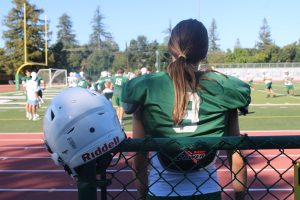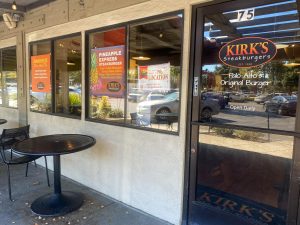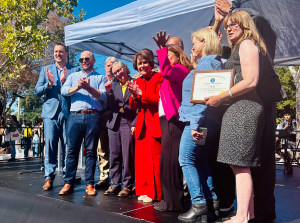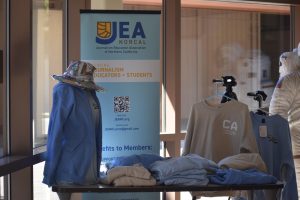Many students hesitant to return in-person to secondary schools
March 4, 2021
While Palo Alto Unified School District’s secondary school teachers prepare for the reopening of campus according to the new reopening plan, students are split on their decisions whether to return, as reflected in Palo Alto High School Principal Brent Kline’s survey results.
The results show that a little under half of students who participated in the survey, which was 1,143, said they will likely return to school under the new reopening plan, taking effect as early as March 9. While around a quarter of the students said they will eventually return, 32% said they will continue to be distance learning for the remainder of the school year.
The new plan gives students the option to come to school for at most two days a week to attend all of their classes. According to Superintendent Don Austin, who presented the plan on Feb. 9 during a PAUSD board meeting, students will not be in isolated cohorts and will be required to follow all COVID-19 safety guidelines.
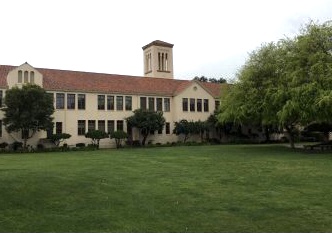
While some parents and students are content with the plan, many students are concerned about the enforcement of safety measures on campus, especially with the absence of cohorts. Junior Arnav Singhal said he feels that returning to campus poses a health risk, despite precautions.
“The new plan seems to me like a useless attempt to reopen schools for little to no benefit and an unignorable amount of risk,” Singhal said. “I am not convinced that it is safe to return to campus so early, and I think it needs to be proven that it is safe, rather than just claiming that it is probably not unsafe.”
Sophomore Johannah Seah also voiced uneasiness about the potential increase in cases that could result from reopening campus, which she said could become a precedent for a relaxed attitude towards COVID-19. After hearing about the outbreak at Summit High School in Oregon following a return to in-person learning, Seah said she fears the same situation could happen in Paly.
“We can’t keep half-trying, re-shutting down, prolonging the quarantine, and costing more lives,” Seah said. “The last thing I want is for someone in our community to pass away because of COVID-19, or be permanently damaged by the virus, or lose a family member or loved one. Reopening schools in these conditions will only make that reality more likely. We cannot become desensitized to the effects of COVID-19.”
Although the plan offers a refreshing change for many students, it creates many challenges, including tracking the potential spread of disease through contact tracing, said Seah.
“Contact tracing is something that will be much more difficult, for example, and the flexibility also means classroom sizes cannot be rigidly regulated, and may need to be transferred into overflow rooms,” Seah said. “This completely dissolves the one of the entire points of the plan, which is teacher-to-student and student-to-classmate interaction.”
As with many students, Seah said she feels the need to remind others of the severity and danger of COVID-19. In what feels like an endless cycle of COVID-19 cases rising and falling, Seah said she feels powerless after speaking out again and again to administrators but hopes that her voice, along with those of other students, will soon make an impact.
“Hope and optimism are powerful and wonderful, but it cannot interfere with safety and the right choice,” Seah said. “Yes, COVID cases are decreasing. The umbrella [distance learning] is keeping us dry. That doesn’t mean we should throw out the umbrella. The restrictions are working — let’s keep going with it, let’s push through, let’s get cases all the way down.”
While some students are primarily concerned about the threat to their safety and the safety of their families, others say they are more worried about the changes, or lack thereof, that the plan will make to their education. Sophomore Mattia Brembilla said his dislike of the plan stems from having to still learn through a screen. Brembilla said that because the only difference between distance learning and in-person learning is the surrounding environment, it will not be very effective.
“Personally, I don’t learn well over Zoom, and it’s the same with most other Paly students I’ve talked to,” Brembilla said. “Reopening school would only be helpful to our learning if we can stop using Zoom and have normal lessons.”
Brembilla added that returning to campus would restrict him to using a Chromebook, compared to a more powerful computer at home, which could cause him to encounter more technological issues.
Despite these worries, some students, like freshman Anna Van-Riesen, say they are optimistic about the plan because it serves as a first step towards normalcy and provides the advantage of adaptability to students.
“I’m glad to know that I don’t have to commit to one [pathway] or the other and that depending on how I feel I can choose which one I want to go to, which I feel like will be great for one’s mental health, because I think what we’re starting to realize is that our ‘safe’ is subjective,” Van-Riesen said. “I think what it essentially boils down to is how much we as a community are willing to commit — committing to safety, and committing to doing what’s best for the whole community.”


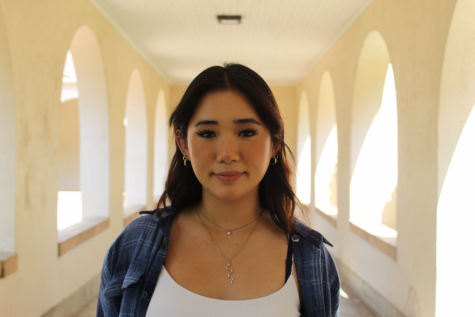
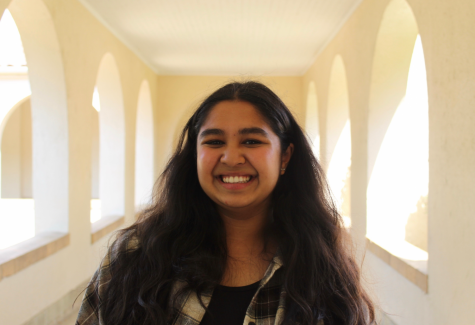

![In the fourth period AP Calculus BC class at Palo Alto High School, senior Crystal Li places her phone in the “phone jail.” Starting July 2026, this may become a normal procedure across schools in California thanks to Governor Gavin Newsom signing the Phone-Free School Act into law last week. According to Li, there are often unnecessary complications that come with enforcing phone restrictions. "It becomes a hassle putting it [a phone] in [the phone jail] before class, and taking it out after class," Li said. "There have been multiple times where kids from other periods interrupt the teacher to come back in and pick up a phone they left."](https://palyvoice.com/wp-content/uploads/2024/09/IMG_7386-3-300x225.jpg)
